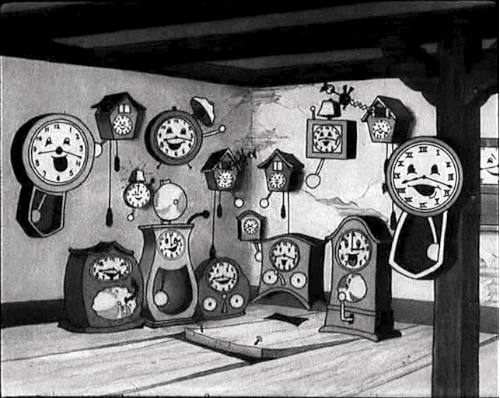Clock Stoppers: Language and the Perception of Time
Since not all of us are lucky enough to have access to a TARDIS or Bill and Ted’s telephone booth (…what is it about time travel and booths?), the rest of us mere mortals will simply have to use another method to traverse the passage of time. And for that, we can turn to languages. Did you know that there’s more than one way to experience time depending on the language you are speaking? Join us on our language adventures to learn more.
GIF via Giphy
Stop all the clocks
…because maybe the first indicator that we think differently depending on the language we’re speaking, is how we view the time. You probably picked this up the first time you were handed one of those paper clock worksheets by your language tutor in school and were told to draw the hands in to show the time.
In French, for example, ‘quarter to’ the hour – future thinking – becomes moins le quart ‘(the hour minus a quarter) – past thinking. Whereas for German, 30 minutes after the hour is a very distinct future thinking ‘half way to the next hour’ – 7:30 is halb acht (half way to 8), where us English speakers are more past-oriented, with 7:30 being ‘half past seven’. Mandarin’s time-telling is different again, with reading the time more like you would a digital clock: 6:55 becomes liù diăn wŭ-shí wŭ (six hour fifty five).
Tensing up
Yes, we know future tenses can be flummoxing when learning languages, and this won’t help much to change your mind on that, but the way languages approach the need to talk about the future is fascinating, even if learning the rules for them all is headache-inducing. Besides, we are looking at ways to time travel, are we not?
Learning a new language? Check out our free placement test to see how your level measures up!
In English, future tenses generally involve shoving a ‘will’ in front of what you’re going to say, or using ‘going to’, or using the present continuous with some kind of time stamp to make that future known. This is similar to Spanish in some ways, where you can use the present tense to speak about a future activity with an indicator of time, or use the ending -ir, which works very much like our ‘going to’. French follows a similar pattern with its -ai ending, and in theory with patterns like these, learning a Romance language from a Germanic one should be fairly straightforward.

GIF via Giphy
And now for all those lovely languages that make life incredibly simple by not having different versions of verbs depending on the present, past, or future. These languages all use time indicators alongside verbs in the present tense to indicate when something is happening, in a similar way to the languages already mentioned above. As examples of other languages, this seen in Mandarin and Japanese, as well as in Finnish, although if you want to emphasise the future in Finnish, you can also add the word aikoa – ‘to intend’, to whatever it is you are trying to say.
And whilst we are speaking about languages that are kind to their learners by not having multiple tenses to have to master, talking about the future in Arabic involves little more than adding -sa or –sawfa to the verb you want to use, and Swahili uses a variant on this ‘present tense’ idea by using the tense marker -ta- to do the job – only this goes in the middle of the word, not at the end.
Up to interpretation
Because yes, clocks can be read differently, and apparently there are numerous ways of talking about the future with present tense work arounds, but where’s the sense of time travel in that? Well, hold on to your flux capacitors, because here’s where things get interesting.
In languages such as English and Swedish, we perceive the future to be in front of us, and the past, well, behind us. But for languages such as Aymara of Peru, the opposite is true, and the logic behind that is sound; we don’t know the future, we can’t see it – much like we can’t see behind us, yet the past is known to us and so that is in ‘front’. This is even true in the gestures of those languages; ‘future forward’ languages tend to point forwards for indicating things that are to come, but ‘past forward’ ones will tend to gesture backwards.

Photo via Pixabay
Another difference in languages comes from whether we view a time axis as horizontal or vertical. English speakers tend to think in terms of left to right, with left being the past and right, the future. But languages such as Mandarin adopt a horizontal time axis, which means the ‘older’ point in time is at the top, and the ‘newer’ at the bottom. So what is ‘last week’ for English speakers becomes ‘up’ (shàng) week, and ‘next week’ is ‘down’ (xià) for those speaking Mandarin.
Now, if that isn’t enough of a nudge to get you at least mildly interested in at minimum scanning over a language you were considering learning – actual time travel, well. We don’t know what else to offer you.



